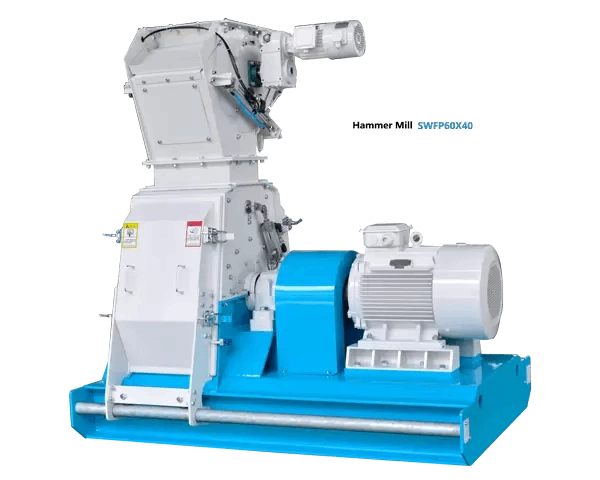In agricultural production and animal husbandry, the quality of feed directly affects the growth and quality of plants and animals. As an important tool to ensure feed quality and efficiency, the performance of feed grinder is crucial to the entire feed processing process. Faced with a wide range of feed grinder models and functions on the market, how to accurately choose the equipment that suits your needs has become a topic worthy of in-depth discussion.
1. Clarify your needs: Before choosing a feed grinder, you should first clarify your crushing needs, including the type of material to be processed, hardness, particle size, and expected production capacity. Different materials have different requirements for crushers. For example, grains such as hard corn or sorghum require powerful crushing machinery, while silage or wet materials require equipment suitable for wet environments. At the same time, considering future production expansion, it is recommended to purchase a model that is slightly larger than the current demand in case of emergency.
Common types of feed grinders on the market include hammer, blade, roller, and ball mills. Hammer mills are favored for their high efficiency and wide range of applications, but they wear more when handling extremely hard materials; blade mills are good at fine grinding, but the output is relatively low; roller mills are suitable for scenarios that require precise particle size control, while ball mills are more suitable for ultra-fine grinding of mineral feeds. Each type of grinder has its own advantages and limitations, so it is necessary to choose the type of grinder according to the material characteristics and crushing goals.

2. Consider output and power: Output is a key indicator to measure the performance of feed grinders. On the one hand, the output of the grinder must meet the minimum production requirements, and on the other hand, excessive output will increase energy consumption and costs. Therefore, it is crucial to choose a model that matches the actual production capacity. In addition, the power of the motor determines the energy consumption and continuous working capacity of the grinder. Although a high-power grinder can provide a larger output, it is also accompanied by higher energy consumption. With the increasing energy costs today, it is particularly important to choose a grinder with excellent energy efficiency ratio.
3. Quality and durability: Quality and durability are key factors in determining the long-term use cost of feed grinders. When choosing, you should pay attention to the material structure, processing technology and brand reputation of the machine. Although high-quality grinders have high initial investment, they have low maintenance costs, long service life, and are more economical in the long run. In addition, inspecting the warranty period and after-sales service provided by the manufacturer is also an important aspect of evaluating quality. Good after-sales service can provide timely solutions when problems occur with the machine and reduce production losses.
4. Supporting equipment and processes: In addition to the grinder itself, its supporting equipment such as conveying system, dust removal system, control system, etc. will also affect the overall operating efficiency and environmental impact. Modern feed grinders are usually equipped with automated control systems that can achieve precise operation and reduce labor intensity. At the same time, efficient dust removal systems can reduce dust emissions and improve the working environment. Therefore, when choosing a grinder, the quality and efficiency of these supporting equipment should also be fully considered.
5. Pay attention to operational convenience and safety: Operational convenience is directly related to production efficiency and operational difficulty. High-quality feed grinders are reasonably designed and easy for operators to master. At the same time, they have safety protection measures to ensure safe use. While understanding the grinder, you also need to understand the operating procedures and possible risk points. Well-trained operators will significantly improve operating efficiency and safety.
6. Price and after-sales service: In addition, price is also one of the important considerations for choosing a feed grinder. The prices of feed grinders on the market vary greatly, mainly depending on factors such as brand, model, and performance. When choosing a feed grinder, not only the price should be considered, but also the performance, quality, and after-sales service. Choosing a feed grinder with a reasonable price, stable performance, and reliable quality can improve production efficiency and reduce production costs.
Finally, after-sales service is also one of the important factors in choosing a feed grinder. As a mechanical equipment, the feed grinder will inevitably fail or require maintenance during use. Therefore, it is very important to choose a supplier with a complete after-sales service system. Before purchasing a feed grinder, you can consult other farmers or check relevant reviews to understand the after-sales service quality of the feed grinder supplier so that you can get timely technical support and maintenance services during use.
In short, choosing a suitable feed grinder is a systematic project, which requires comprehensive consideration of multiple aspects such as crushing requirements, machine performance, output requirements, product quality, supporting equipment, ease of operation, and economy. Only by comprehensively considering these factors can we choose a suitable feed grinder to improve breeding benefits and reduce production costs.